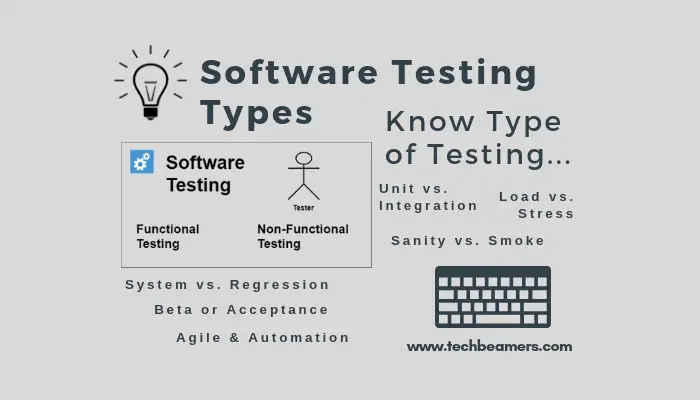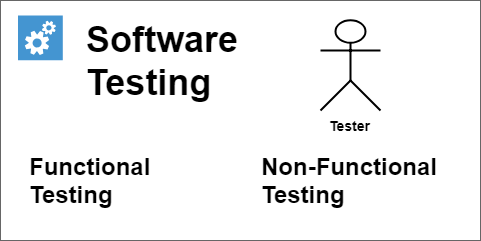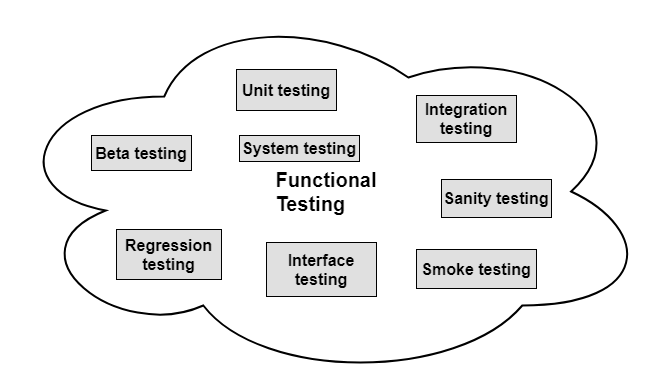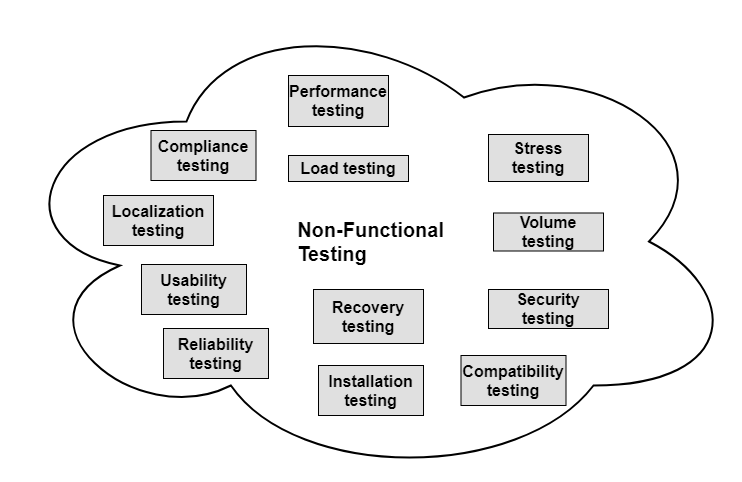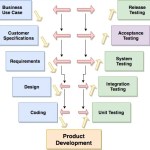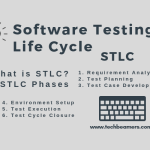Do you wish to learn about the different types of testing? It’s a question that comes up in the mind of every Software tester. Hence, in this post, we’ve described all possible testing types.
Most testers would know about functional testing, automation testing, nonfunctional, acceptance or Agile testing. But it’s a fact that many other testing types exist in the real world.
A tester might have unknowingly covered a type of testing that he or she didn’t know by name. Hence, it is a must for you that being a tester you know about all testing types. It would not only help in preparing the test plans, and execution reports but also let you execute it effectively.
Let’s Explore This Ultimate Guide to Testing Types
Each type of testing is distinct from the others. They have their specific attributes, purpose, pros, and cons as well. From this post, you can learn about the various testing types. After that, you should be able to identify how a particular type of testing is different from the other.
As per the latest trends in the IT industry, testing types have the following two main categories.
Functional testing is one of those testing types that validates that every function of the Software operates as per the functional requirement specs. This type of testing explores the system as a black box and verifies whether all the components in the Software are functioning correctly or not.
Non-functional testing is one of those testing types that validates the non-functional areas of Software such as performance, compatibility, compliance, etc. Such type of testing confirms the application readiness as per the non-functional requirements which are not part of the functional validation.
Functional testing types
Unit testing
Usually, it’s the job of a developer to do it. It focuses on the unit level and assists in validating the internal implementation of a feature in the project.
Integration testing
As the name suggests, the testers perform it to check different components of the target system are working as expected as a single unit.
System testing
This type of testing ensures the stability of the overall product. Usually, it is done once the development is completed.
Sanity testing
It is nothing but the execution of a smaller chunk of test cases taken from the main test plan for validating the basic functionality of the product under development.
Smoke testing
The alternate name for this type of testing is Build verification testing. It has a majority of non-exhaustive test cases that intend to exercise the core functional areas of the product under test. It helps in establishing the stability of a build and decides whether to continue the test execution or not.
Interface testing
It is one of the testing types executed by a tester on the application under test. It probes the errors in the communication channel (Interface) that exist between two distinct Software systems.
Regression testing
It is one of the strongest pillars of all testing types. It primarily tests the fact the new development is not breaking the old functionality. Such a kind of testing requires enormous efforts, and hence, mostly the test automation takes care of it.
Beta testing
Bets testing is a type of acceptance testing that intends to bring the customer perspective into validation. It means that the end-user (actual user) gets the opportunity to explore the usability, functionality, compatibility, and reliability of the product.
Non-functional testing types
Performance testing
The performance testing is a type of testing which runs a Software application under high load and evaluates its behavior. Every customer wants a product that can respond without any error during the peak load. Hence, the response time, throughput, reliability, and scalability of the application become crucial.
Load testing
It is a form of Performance Testing that measures the performance of Software under real-time load conditions. This type of testing helps to discover the limits of an application to the point of breaking. The end goal of this testing is to confirm the maximum operating capacity of the Software.
Stress testing
It is one of the unique testing types which observes the robustness of an application by running it in beyond normal conditions. Stress testing is only feasible for “mission critical” software such as server-class applications with zero downtime.
Volume testing
It is also a form of Performance Testing that puts the Software to the test against a large volume of data and assesses its performance. Due to the nature of this type of testing, we often call it flood testing. Usually, the database and the automated scripts help to generate the desired volume and to record the system performance.
Security testing
It is a unique validation strategy which intends to discover the areas inside a Software system which are insecure and susceptible to attacks. This testing ensures that the system protects the data and maintains functionality as it claims.
Compatibility testing
Software systems do have many dependencies such as platforms, runtime, compilers, third-party libraries, browsers, web servers, etc. Here, compatibility testing helps to assert whether the application can work with the specified dependencies or environment and identifies any issues upfront.
Installation testing
Usually, most Software applications use installer packages that copy files, prepare the system registry, configure firewalls, and assign permissions to make the product ready for the end-user. The installation testing explores these areas and checks whether the installer is working as expected or not. It also tests the upgrade scenarios along with the install/uninstall operations.
Recovery testing
Out of all testing types, recovery testing validates whether the application can recover from unexpected events like crashes, and machine or network failures, or not. Recovery testing imitates these unintended failures, observes how the application responds, and reports issues if any.
Reliability testing
It verifies that the software under test can operate without any errors for the desired duration in a real-world environment. The reliability testing certifies that the application is error-free and would run as intended on the end-user system.
Usability testing
Usability testing explores the application under test to determine the level of complexity faced by an end-user in using it. Hence, it needs support from some of the real users going to use the system. They get tasks to accomplish using the Software, and a researcher observes them to identify their pain points. Based on their feedback, the developers have to address to improve the product usability index.
Compliance testing
There are software products that have to abide by specific rules or policies usually known as the compliance. The compliance testing ensures that the Software should meet the desired regulatory requirements. If the compliance check fails, then the developers must fix it. Sometimes, it’s not only a small change but turns into a whole new requirement. For example, GDPR is the new EU regulation for protecting the end-user data privacy which every Software has to be compliant, or the vendor has to face the consequences.
Localization testing
Localization is a method by which Software displays its text in the localized language or limits it to a particular region.
Hence, Localization testing provides a way to test the quality of a Software’s localization for a specific region, culture or locale. And the tester carries it out only on the localized version of the product.
Now, you have come to the end of this post. And you might like to read the top manual testing interview questions to get a quick breakthrough.
Before You Leave
Today, we covered both the functional and nonfunctional types of testing. It should help the Software testers at large to understand which of the testing types they are using in their projects.
Lastly, our site needs your support to remain free. Share this post on social media (Linkedin/Twitter) if you gained some knowledge from this tutorial.
Enjoy coding,
TechBeamers.
